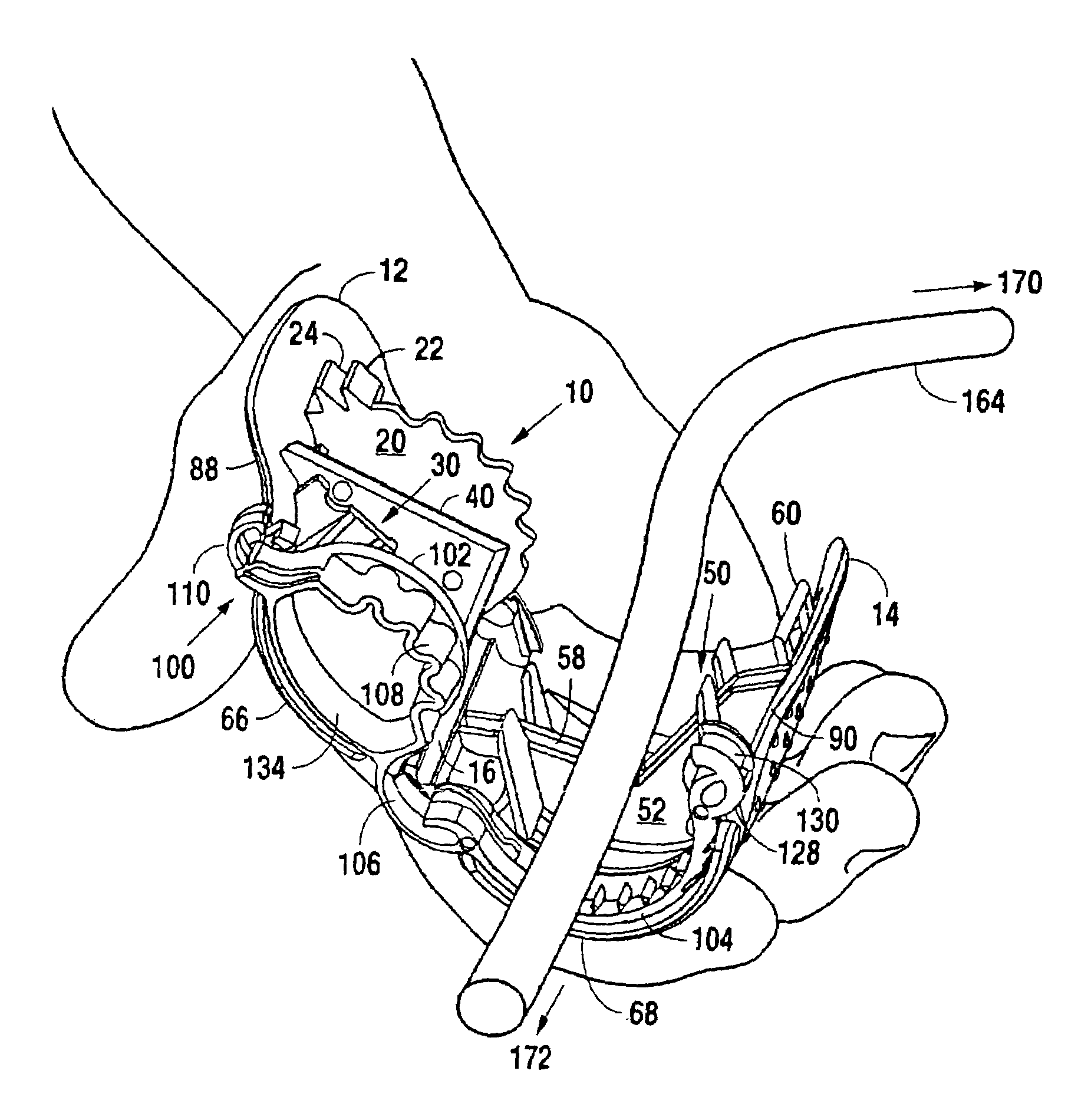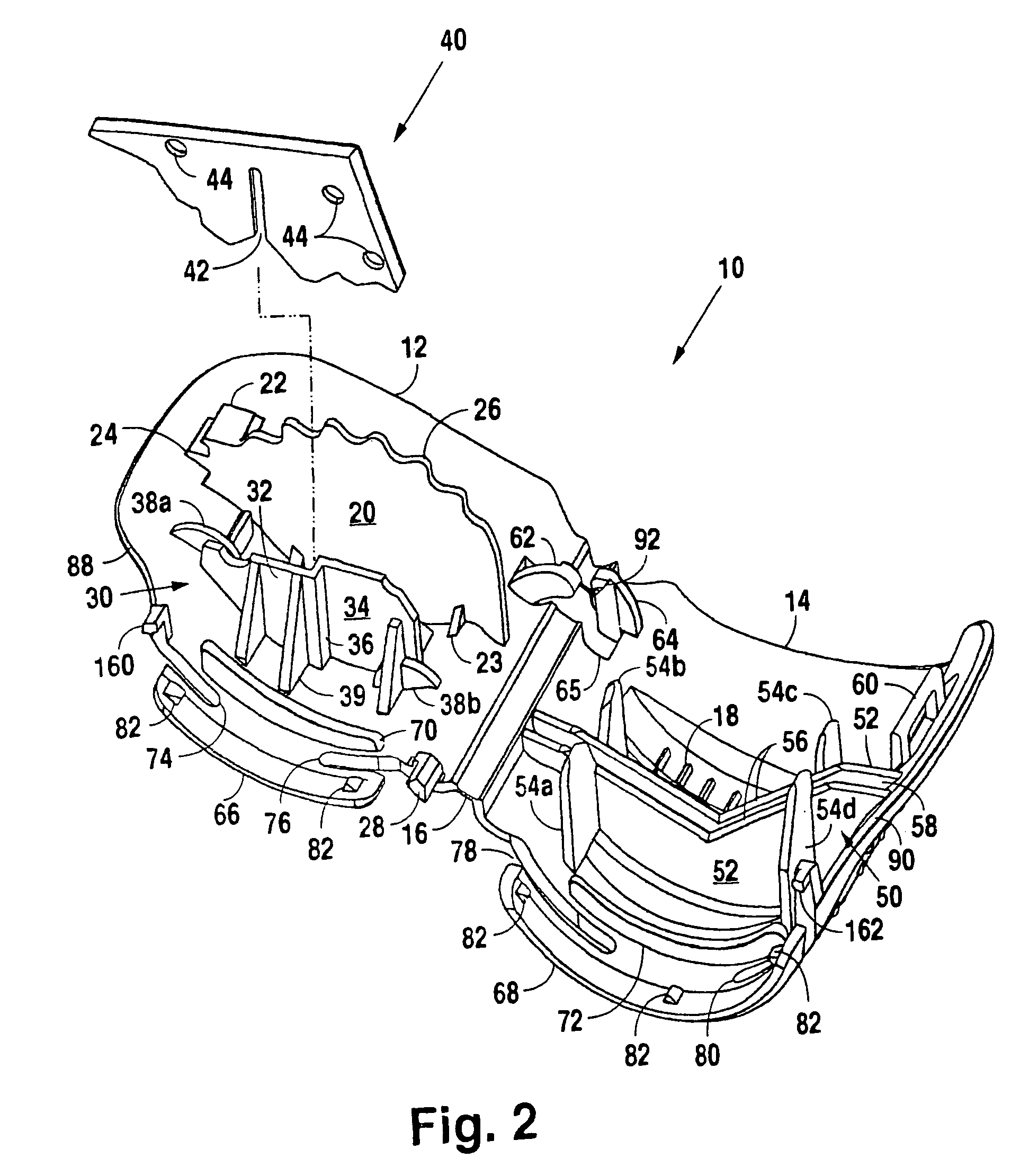Umbilical cord clamp and cutter
a technology of umbilical cord and cutter, which is applied in the field of umbilical cord clamps and cutters, can solve the problems of unaesthetically attractive hollister clamps, increased overall procedure costs, and increased risk of blood-borne pathogens for hospital personnel, so as to prevent blood splatter, easy and safe operation with one hand
- Summary
- Abstract
- Description
- Claims
- Application Information
AI Technical Summary
Benefits of technology
Problems solved by technology
Method used
Image
Examples
Embodiment Construction
[0083]Referring primarily to FIGS. 1-6, a cutter 10 in accordance with the present invention comprises a first shell 12 joined to a second shell 14 by a longitudinal hinge 16. Preferably, hinge 16 is integral with shells 12 and 14, but shells 12 and 14 could be made separately and joined with a separate hinge. As discussed further below, a removable baby clamp 100 is installed on one end of cutter 10. Baby clamp 100 is not shown in FIGS. 2, 3, and 6 for the sake of clarity. A blade 40 is transversely mounted to the inside of shell 12 with a blade holder 30, which extends from the inner surface of shell 12. Blade 40, which is preferably made of surgical steel about 0.03 in. thick, is not shown in FIGS. 4 and 5 for the sake of clarity. The end of cutter 10 to which baby clamp 100 is mounted is referred to as the “baby end,” and the other end is referred to as the “mother end.” As best seen in FIG. 2, blade holder 30 preferably comprises two upstanding walls 32 and 34 connected by a su...
PUM
 Login to View More
Login to View More Abstract
Description
Claims
Application Information
 Login to View More
Login to View More - R&D
- Intellectual Property
- Life Sciences
- Materials
- Tech Scout
- Unparalleled Data Quality
- Higher Quality Content
- 60% Fewer Hallucinations
Browse by: Latest US Patents, China's latest patents, Technical Efficacy Thesaurus, Application Domain, Technology Topic, Popular Technical Reports.
© 2025 PatSnap. All rights reserved.Legal|Privacy policy|Modern Slavery Act Transparency Statement|Sitemap|About US| Contact US: help@patsnap.com



